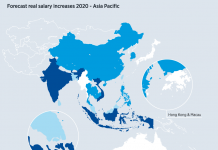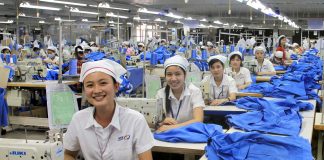Vietnam has always been a prime tourist location in Southeast Asia. However, like all sectors of business, the tourism industry must adapt to changing technologies and practices that affect the world of a global scale. This is especially so for an industry that relies so heavily on its human resources.
According to Joseph T.C. Lee, founder of Malaysia-based Applied Research Institute for SMEs & Entrepreneurs, the development of human resources involves designing tourism-related education and training programmes, offering innovative tourism certification courses, and updating the information technology software system.
At a workshop on the subject in Ho Chi Minh City, he also stated that the training and development of tourism manpower should be led by the guiding hand of qualified and experienced trainers or tourism industry veterans who have been exposed to all aspects of the business.
Lee also mentioned that local universities, colleges, and internationally recognised foreign higher education institutions should offer industry-driven qualifications. These may include diplomas in tourism, bachelor of tourism management and other such relevant tourism-related courses approved by the tourism authorities in Vietnam.
The workforce throughout the world is growing increasingly diverse. Multiple generations of workers are now willing to work and Vietnam is not an exception to this trend. As such, it is important that training and development activities match the learning preferences of each generation of workers, said Swathi Ravichandran, director of Bowling Green State University’s resort and attraction management programme.
Training is essential to achieve benefits like lowering the number of errors and customer complaints, increasing sales revenue and profits via enhanced customer satisfaction, and increasing employee job satisfaction and commitment, she added.
Vietnam’s tourism industry has been experiencing steady growth over the past few years. In 2018, Vietnam welcomed 15.5 million foreign tourist arrivals and tourism revenue were estimated at VND620 trillion (US$26.72 billion).
Deputy Minister of Culture, Sports and Tourism Tạ Quang Đông said that the tourism industry accounted for approximately 7.5 per cent of Vietnam’s GDP.
Due to the huge impact that the travel and tourism industry has on the socio-economic development of the country, the government is prioritising the industry as a major driver of growth by releasing the “Strategy for Việt Nam’s tourism development until 2020, with a vision to 2030.”
Said strategy focuses on market development, training professionals, branding strategies, infrastructure development, and developing tourism products and services with local cultural characteristics.
“Developing high-quality tourism human resources has been identified as one of the core tasks,” Đông said.
With the tourism sector’s annual growth rate of 7 per cent in 2016-20, the demand for direct human resources is expected to reach 870,000 by 2020, according to the Institute for Tourism Development Research.
More than 190 educational establishments offer tourism human resource training, including 65 universities, 55 colleges, and 71 vocational training schools.























